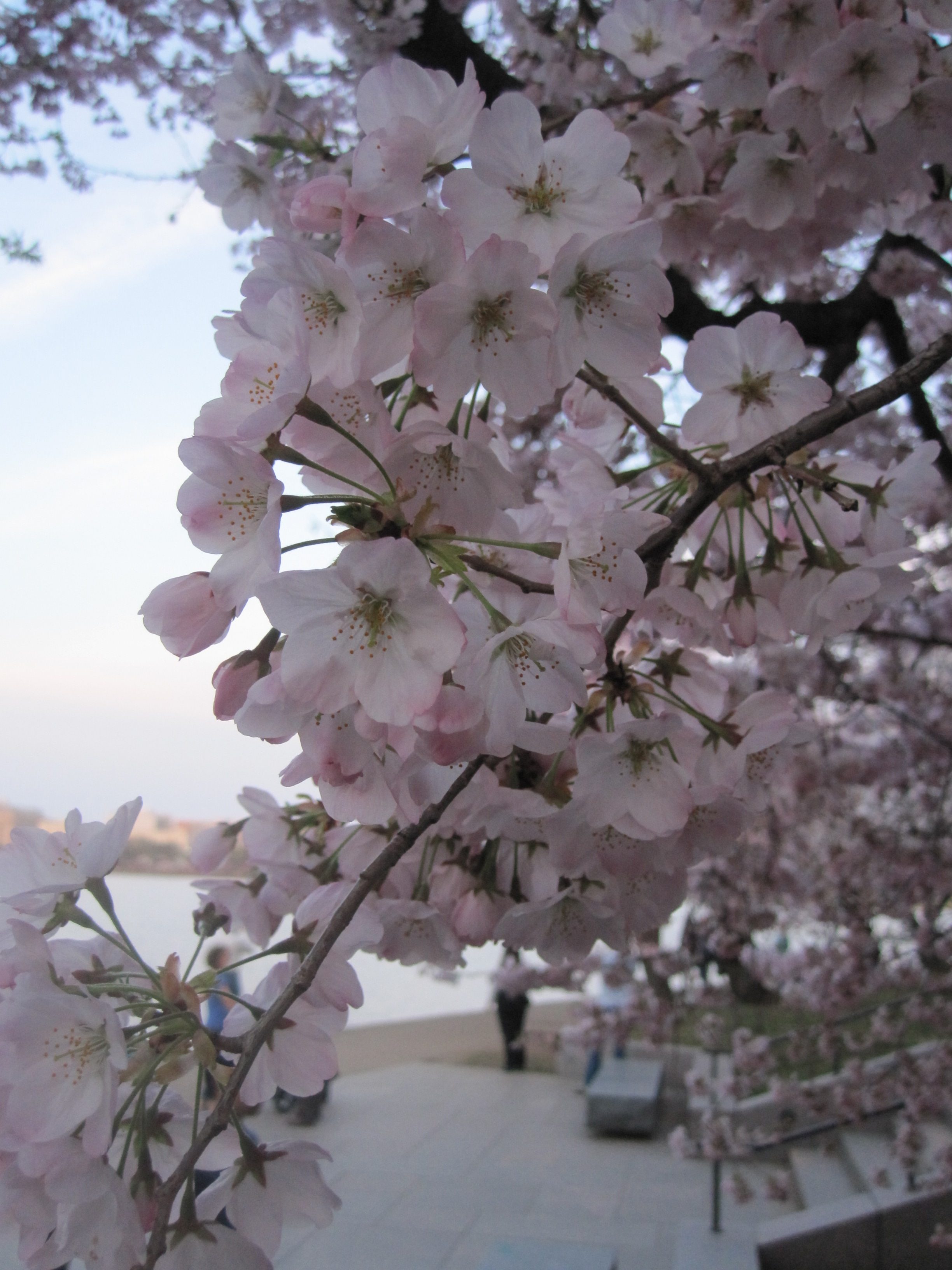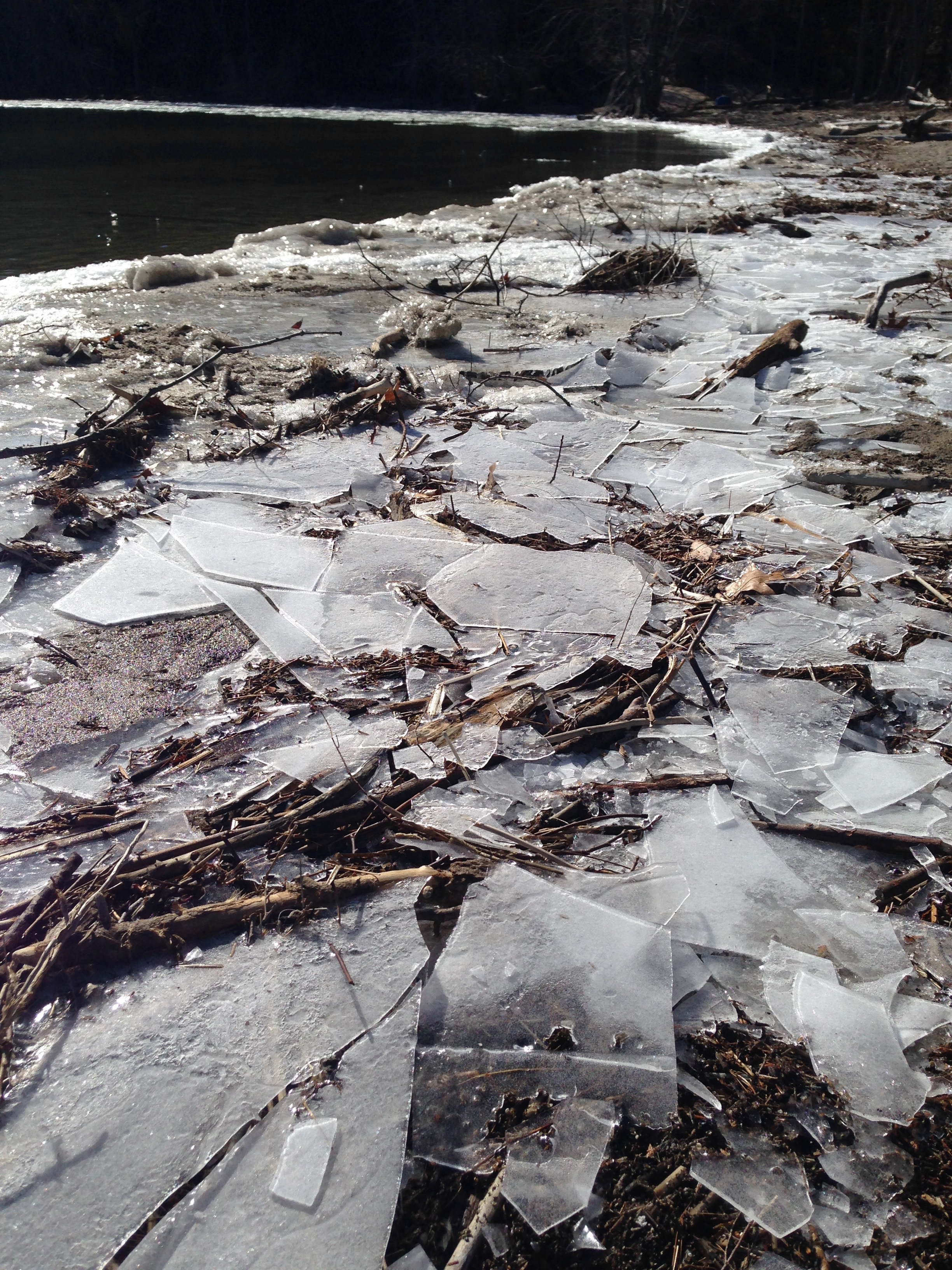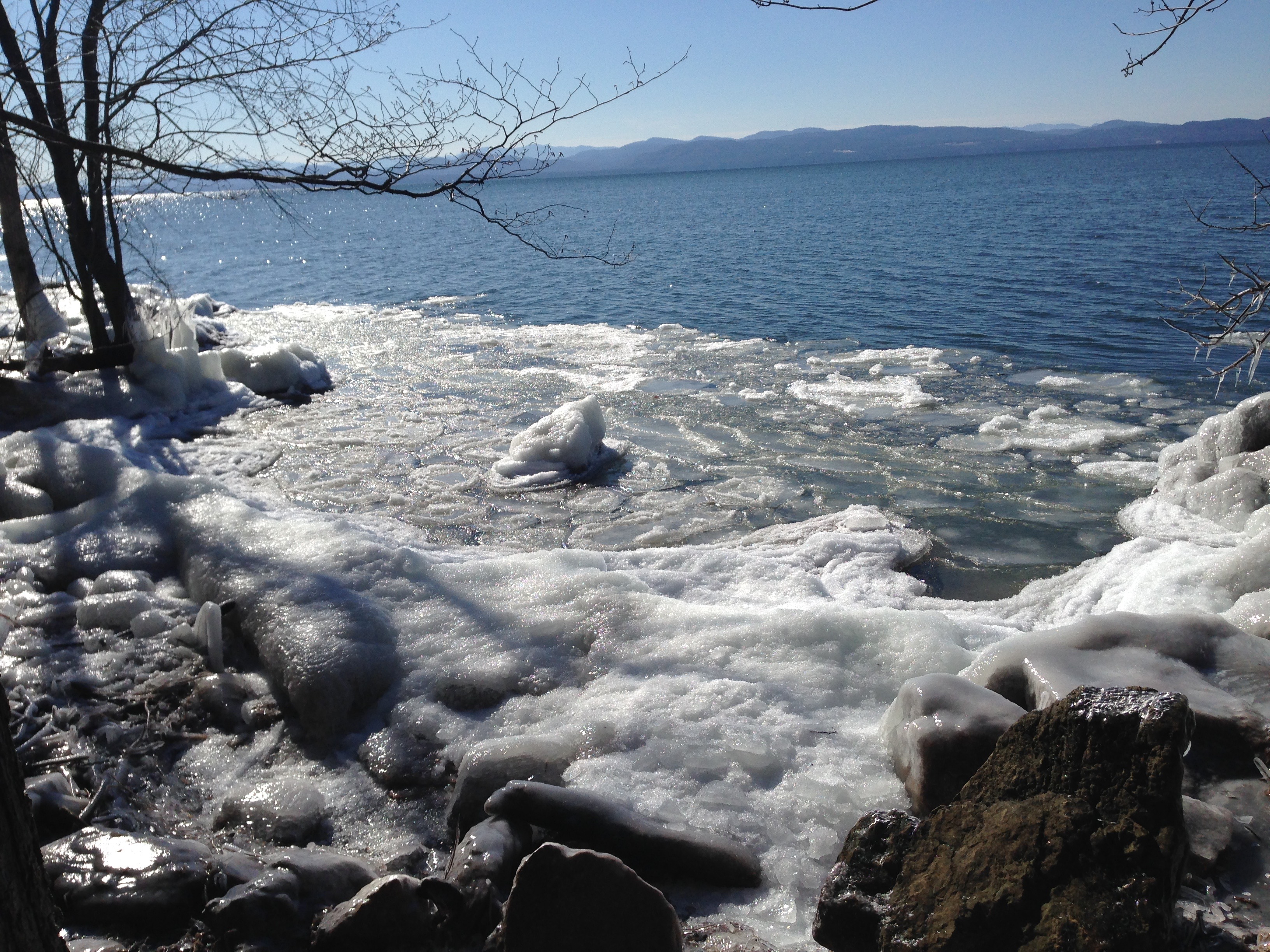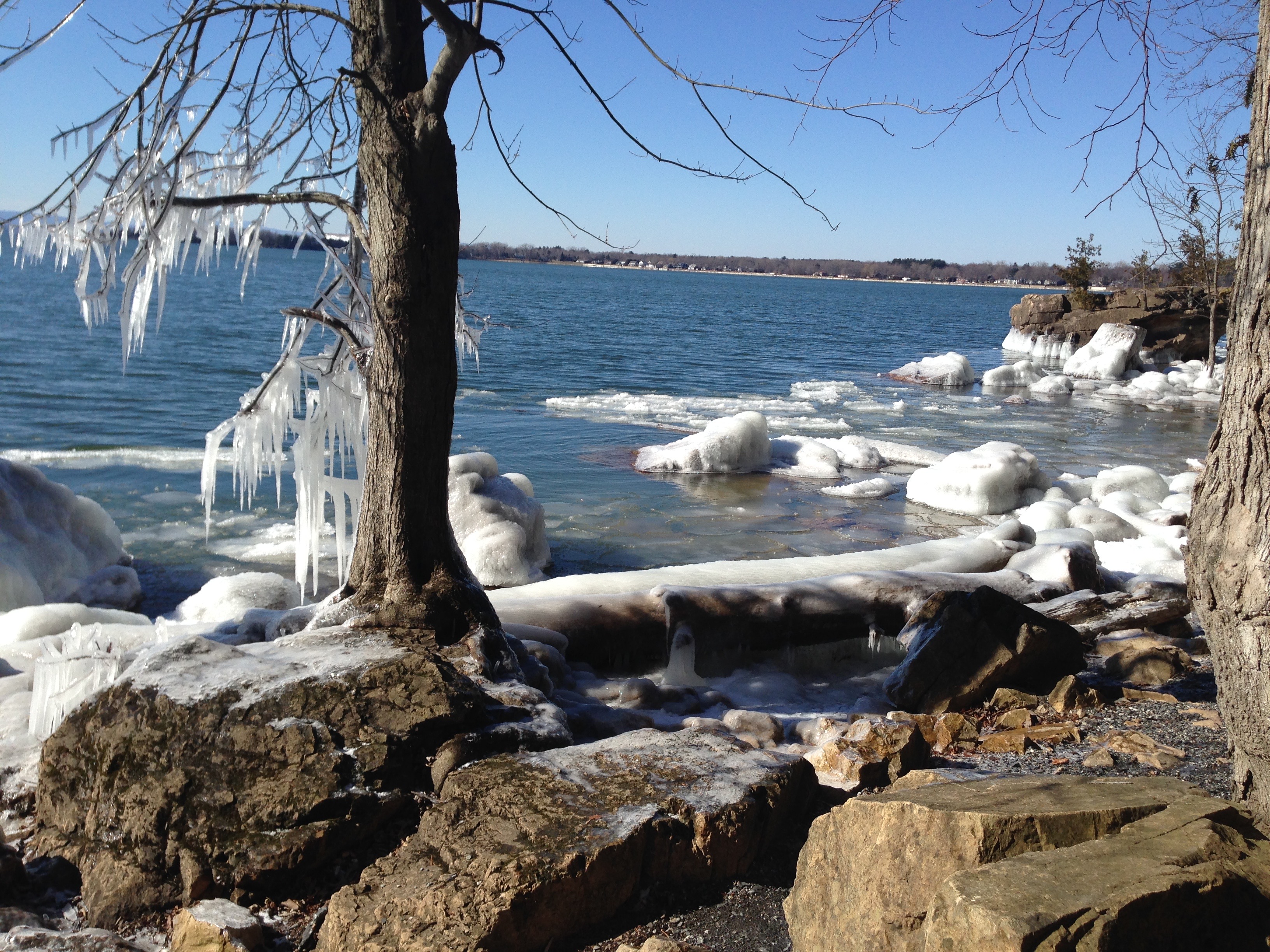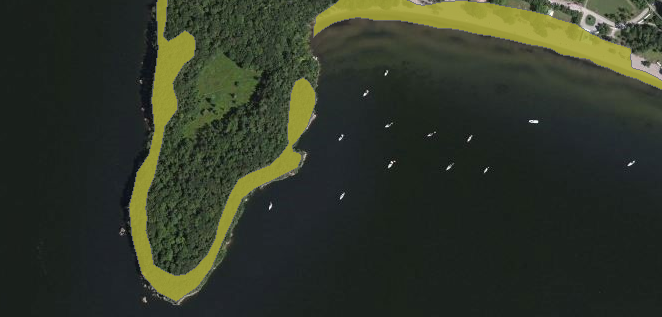As soon as I arrived at the airport in DC last Friday I was chastised for bringing the cold weather with me. The weather just before I arrived had been spectacular. Hyacinths, daffodils, phlox and forsythia flowers were all in bloom and the cherry blossoms were just budding, expected to peak the week after break.
My parents caught me up on the odd phenological trends I had missed in the city. After a winter of nearly no snow, spring seemed to come a bit sooner than usual. With record high temperatures throughout February, many flowers bloomed too early and were killed shortly thereafter by unexpected cold spells. For instance, the pink flowering magnolia trees that can be found everywhere in the city bloomed for exactly one day before turning brown with an overnight shift in the weather. The city’s biggest spring attraction, the Japanese cherry blossom trees were beginning to bloom much sooner than they should. Their peak week, an event that historically happens the first week of April, would be starting once again much earlier this year. On Friday, the Washington Post reported that for the first time in the 102 years of cherry blossom trees in DC, half of them will not be blooming this year because of the sudden cold weather earlier in the week (Stein).
Each year, the weather patterns in this city seem to behave less and less ordinary. A city that depends so much on seasonal tourism is extremely hurt by the extreme fluctuation in weather events we observe year to year as a result of climate change. It is amazing that so many lawmakers in DC continue to push policies that deny the human caused existence of climate change when the impacts can be seen right outside their office windows.
But enough about politics, the purpose of the post is to revisit my home forests of Rock Creek Park.
On Tuesday afternoon, my mom, Sable and I took a hike on the same trails we had explored over Thanksgiving break and countless times before that. I realized on this hike that my favorite thing about Rock Creek Park is its accessibility. When I was growing up my mom would always bribe my brother and I to go on hikes. Each hike had an end destination. We would hike through the woods to Cleveland Park where we would be rewarded with pizza and frozen yogurt or through the woods to the National Zoo where we would spend a few hours with the animals before hiking home. I walked through the park to get to school, church, the library, my brother’s baseball games and the grocery store. The forest was our highway. On this particular trip, we hiked from our house to the Adam’s Morgan neighborhood so I could get a haircut and make some phenological observations along the way.
It had snowed all morning so the forest was an interesting compilation of spring and winter. Several inches of quickly melting slushy snow littered the ground making walking tricky and animal tracking nearly impossible.
After spending several days learning about Biofinder a few weeks ago, I couldn’t help but wonder about the habitat conditions of a forested landscape within a big city. People certainly love the park, using it for all sorts of recreation while also providing a slower rural atmosphere in the midst of such a big place. Last fall in my post about Rock Creek Park, I noted its maturity, made up of many more older growth trees than the forests I’ve encountered in Vermont. Tree age however, is only one indicator of a healthy forest. Modern fragmentation is arguably the most impactful current threat to the natural communities of Rock Creek Park. Sandwiched between neighborhood row houses and the busy parkway, the nearby city development redefines notions of preservation.
Rock Creek Park is also home to many more ornamental nonnative species than what I have observed growing on Lone Rock Point. These species were easy to spot as they were more green than their deciduous surroundings. English ivy, holly and magnolia species, and daffodils planted at a park entrance were among the most notable outsiders.
The presence of people in the park did not end with fragmentation and ornamental species. In fact, one of the most obvious signs that I was in a forest within a city was graffiti. Many of the American beech trees have names carved in them and other trees were decorated with spray paint.
I was alerted to the presence of birds in the park not by the steady chirping or woodpecker tapping that I typically hear on Lone Rock Point but by a sign. Evidentially spring in DC means it is the season for wood thrush nesting, DC’s official bird. This piece of information was news to me. I’ve lived in DC my entire life yet I’ve never encountered a wood thrush.
The cold snowy day was perhaps not the best time for bird watching and I was shocked to see nearly no signs of bird life on my hike. Several days later, I went on a morning walk with my dog and I was amazed at the dominating presence of bird songs. If I closed my eyes I felt as though I had transported myself to a forest rather than my busy neighborhood streets. The sun was out, the temperature was in the upper 40s and for the first time all break, it actually felt like spring. European starlings, warblers, crows, robins, sparrows, blue jays, chickadees and pigeons each contributed to a very spring-like atmosphere.
Hydrology in the park is similar to that of Lone Rock Point this time of year. The only difference is that the hills in the park create many more streams than what is found on the point. The water in Rock Creek Park is also very well managed by people. In one spot a plastic runoff barrier was preventing water from flowing down into the parkway creating a small manmade, potential vernal pool.
I was happy for the chance to once again spend some time in Rock Creek Park. It is hard to believe that the next time I am here the forest will be a much different place as it begins to embrace the long hot summers of DC.
(A map of the park as well as information surrounding the natural history and woody plant species I’ve observed is provided in more detail within my Thanksgiving Break post.)
(Original Photographs Copyright Colby Bosley-Smith, 2017)




